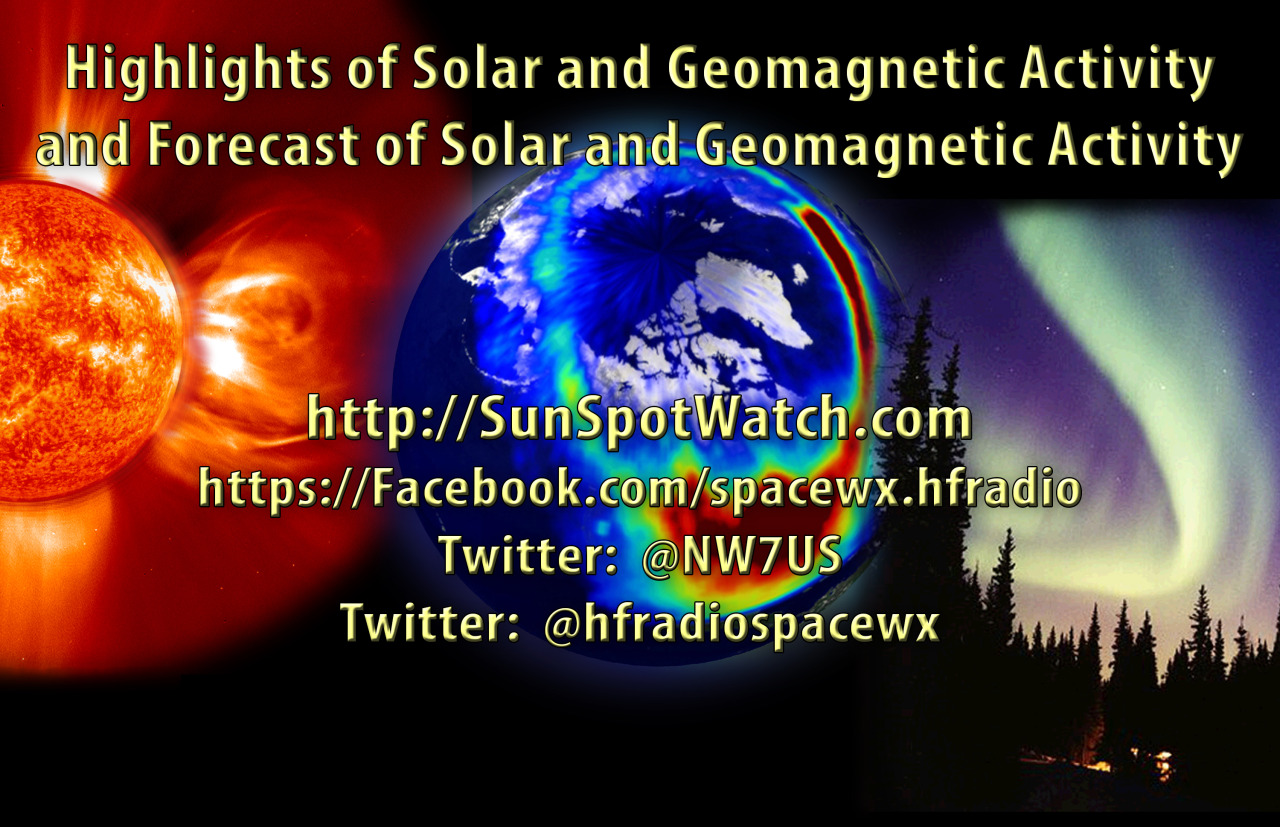 Weekly Propagation Summary – 2016 May 09 16:10 UTC
Weekly Propagation Summary – 2016 May 09 16:10 UTC
Here is this week’s space weather and geophysical report, issued 2016 May 09 0436 UTC.
Highlights of Solar and Geomagnetic Activity 02 – 08 May 2016
Solar activity was low and only C-class flare activity was observed. Region 2540 (N21, L=068, class/area=Hrx/20 on 01 May) produced a C3 flare at 02/0842 UTC which was the largest event of the period. Region 2535 (N05, L=124, class/area=Hax/60 on 24 Apr) produced a C1 flare at 04/1531 UTC that had an associated Type II radio sweep (est. shock speed 560 km/s) and coronal mass ejection (CME). This CME was first observed in LASCO/C2 coronagraph imagery beginning 04/1412 UTC and likely arrived at Earth early on 08 May (see geomag section below for additional information). A pair of filament eruptions centered near N22E39 and N31E42 were observed in GONG imagery beginning at around 07/1515 UTC. The associated CME was first observed in LASCO/C2 imagery at 07/1648 UTC but analysis indicated that this CME was not Earth-directed.
No proton events were observed at geosynchronous orbit.
The greater than 2 MeV electron flux at geosynchronous orbit reached high levels on 03-06 May and moderate levels on 02, 07-08 May.
Geomagnetic field activity was at unsettled to G1 (Minor) geomagnetic storm levels on 02 May with quiet to active levels on 03 May due to the influence of a negative polarity coronal hole high speed stream (CH HSS). Quiet levels were observed on 04 May and quiet to unsettled levels were observed on 05 May under a nominal solar wind regime. The onset of a positive polarity CH HSS caused quiet to G1 (Minor) storm levels on 06 May and quiet to active levels on 07 May. On 08 May G1-G3 (Minor-Strong) geomagnetic storms were observed and analysis suggested that a CME (likely from 04 May as mentioned in solar activity section) was embedded in a CIR preceding a negative polarity CH HSS.
Forecast of Solar and Geomagnetic Activity 09 May – 04 June 2016
Solar activity is expected to be at very low (B-class flares) to low (C-class flares) levels throughout the outlook period.
No proton events are expected at geosynchronous orbit.
The greater than 2 MeV electron flux at geosynchronous orbit is expected to reach very high levels on 10-13 May and high levels on 09, 14, and 30 May-02 Jun. Moderate flux levels are expected for the remainder of the period.
Geomagnetic field activity is expected to be reach G3 (Strong) geomagnetic storm levels on 09 May and G1 (Minor) storm levels on 10 May due to the influence of a negative polarity coronal hole high speed stream (CH HSS). G1 (Minor) storm levels are likely on 20 May due to the influence of a positive polarity CH HSS as well as on 29 May and 04 Jun due to the influence of negative polarity CH HSSs.
Don’t forget to visit our live space weather and radio propagation web site, at: http://SunSpotWatch.com/
Live Aurora mapping is at http://aurora.sunspotwatch.com/
If you are on Twitter, please follow these two users: + https://Twitter.com/NW7US + https://Twitter.com/hfradiospacewx
Get the space weather and radio propagation self-study course, today. Visit http://nw7us.us/swc for the latest sale and for more information!
Check out the stunning view of our Sun in action, as seen during the last five years with the Solar Dynamics Observatory (SDO): https://www.youtube.com/watch?v=zXN-MdoGM9g
We’re on Facebook: http://NW7US.us/swhfr













